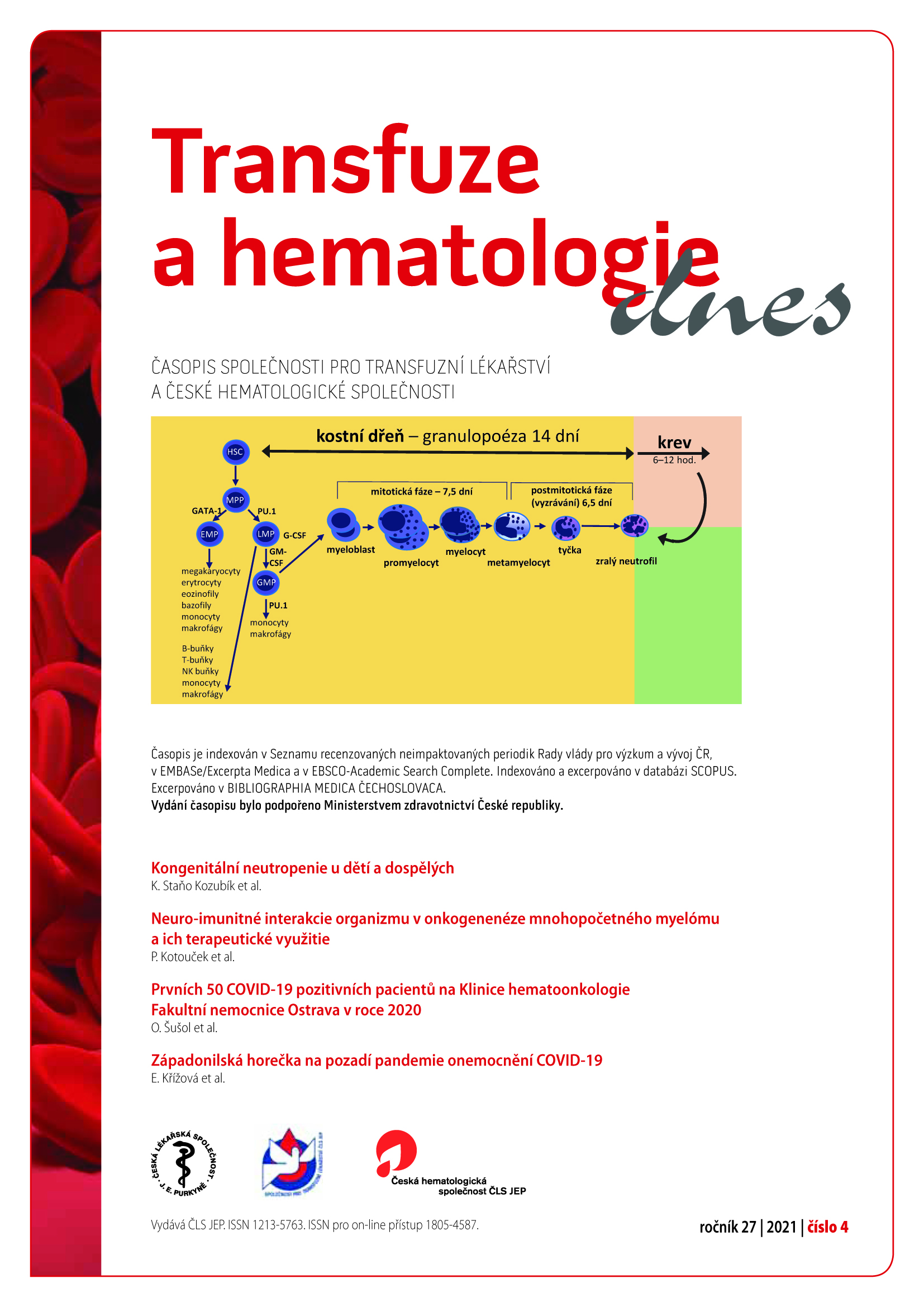Is it possible to predict fate of chronic myeloid leukemia patients assesing early molecular response and its kinetics?
Význam časné molekulární odpovědi u pacientů s CML
Keywords:
chronic myeloid leukemia, molecular monitoring, early molecular response, halving time, mathematical models, treatment-free remissionAbstract
Management and therapy of patients with chronic myeloid leukemia (CML) has changed significantly over past twenty years. Quantitative RT-PCR method for detection of BCR-ABL1 transcript level has become a gold standard for evaluation of response to tyrosine kinase inhibitors (TKI) treatment. Demand for standardization of measurement methodologies resulted in international harmonisation of test results interpretation by their expression on an international scale and assignment of conversion factor to individual laboratories based on comparison with referential sites. Early molecular response to the treatment has a significant influence on the course of disease and selects patients with good prognosis. Part of patients who do not experience the early response have still good prospects in terms of the course of disease; it is possible to take into consideration the kinetics of early decrease of transcript level in order to exclude the part from high risk group. “Halving time” concept suggests a high success rate of prediction of disease sensitivity to applied treatment. In the long-term TKI therapy era, an option to attempt for a treatment-free remission (TFR) has become frequently mentioned. This strategy brings a possibility to interrupt the treatment without recurrence of disease, lowers its adverse effects and economic burden on the system. Even today, identification of patients who are able to achieve this goal is hard and stable TFR is achieved only by minority of the patients. Choosing the treatment strategy may then aim at maximum possible reduction of TKI dose while still preserving treatment response. CML is not a paradigm just because of targeted treatment and its success rate but is ideal also for making mathematical models of an oncological disease, beside other things also due to simplicity of tumour load examination from peripheral blood and its real-time observation. This leads to a possibility to enter easily gained and accurate data into the models. Using such models, we are able to simulate the origin of CML from leukemic stem cell, TKI influence on these cells, various dosage regimens, TFR attempt or immune systems response to presence of disease. The following paper should summarize an overview of treatment response molecular measuring principles, influence of early response and its kinetics on the prognosis of patients, and mathematical models of CML in the organism.


